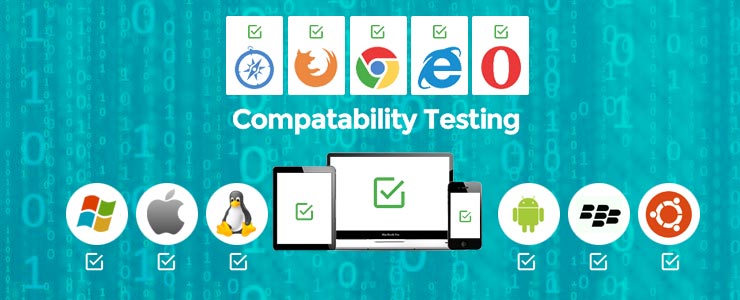
Why you can’t ignore Compatibility Testing
In today’s business world where companies continually strive to fulfill complete customer satisfaction, compatibility testing has become an inevitable part of SDLC. To sustain in this competitive scenario, companies have to make sure that software/products released to the market are of top quality and fully compatible with every type of software, hardware, platforms, OS etc. Compatibility testing detects the incompatible areas of a product with different platforms before it’s released to the market. This testing confirms that a released product fulfills all its goals such as:
Download Free E-Book: Security and Vulnerability Testing – How Critical it is?
- Seamless installation on different OSs and hardware platforms.
- Proper UI and functional performance on different devices.
- Correct performance and functionality on platforms having minimal amount of storage, memory etc.
- Proper operation under irregular network bandwidth.
- Proper connectivity with different type of network connectivity (WiFi, WiMax, GSM, 3G, 4G, etc)
A product that fulfills these goals is considered a quality product that not only improves sales and helps strengthen customer base but takes the reputation of the developers to the next level too.
Types of compatibility tests and how they affect your site performance
Let’s have a look at commonly performed types of compatibility testing.
- Browser: Here the compatibility of the product across different browsers like Google Chrome, Firefox, IE, Safari, Mozilla etc is tested.
- Hardware: It checks the compatibility of the product with different hardware configuration.
- Networks: Here the performance of the product gets assessedin a network with different parameters like operating speed, bandwidth, capacity etc. The same testing is also performed in different networks keeping these parameters into consideration.
- Mobile devices: It determines whether the product is compatible with different mobile devices having different platforms like iOS, Android, Windows Mobile, Bada, Palm OS etc.
- Operating system: It checks the product’s compatibility with different Operating Systems like Windows, Mac OS, Unix, Linux etc.
- Software versions: It verifies the compatibility of the software application with other versions of the software. For example, compatibility of Microsoft Excel with different software versions like Windows 8.1, Windows 8.1 Pro and Windows 8.1 Enterprise.
To perform version checking, two types of compatibility testing are executed:
- Forward compatibility testing: This determines whether the product is compatible with upcoming or more recent versions.
- Backward compatibility testing: This confirms that a product designed under the latest version also performs smoothly in its older versions.
- Software: It checks the compatibility of the product with different software. For instance, MS Excel should be compatible with MS Outlook, MS Word, VBA etc.
- Devices: It verifies the product’s compatibility with different devices such as printers and scanners, USB port devices, Bluetooth and other media devices.
Without compatibility testing, your app or software may not function the way you have envisioned it or worse, cause problems for the end-users, which could be anything from bugs and accessibility issues to more serious functionality issues.
Testing steps
An efficient compatibility testing should include the following steps:
- Original software requirements should be considered to identify the scope of different OSs, platforms, minimal hardware configurations, peripherals etc of the expected operating area of the product. Adjustments might be needed to optimize test case numbers versus the desired platform coverage at present.
- When testing with limited resources, matrix of test cases should be prioritized. Unless certain business reasons demand different types of compatibility testing, test cases related to the biggest segment of end-users should be considered while keeping in mind the market shares of OSs, browsers and hardware platforms.
- At the start of testing, presence of required testing resources like capable test personnel, OS installation media, hardware platforms and related peripherals have to be ensured. Cloud testing services, capable of providing testing tools and test platforms, can also be engaged, if required.
- After deciding on the above three areas, compatibility testing progresses almost in the same manner as earlier test stages that occur before it. Bugs are detected, fixed and re-tested to confirm they have been fixed properly without any side effects. Applied software development methodology determines the details of thistest cycle execution.
Download Free E-Book: Automated Testing for Mobility
Conclusion
Compatibility testing is a non-functional testing that’s solely aimed at customer satisfaction and get more customer base. As today’s highly competitive business world emphasizes on delivering quality of products, you just can’t afford to ignore compatibility testing which would ensure that your product performs or operates on different platforms and in various settings as expected.
More Related Blog

Compatibility Testing – Why is it essential
Why you can’t ignore Compatibility Testing In today’s business world where companies continually strive to fulfill complete customer satisfaction, compatibility testing has become an inevitable part of SDLC. To sustain in this competitive......
Read More